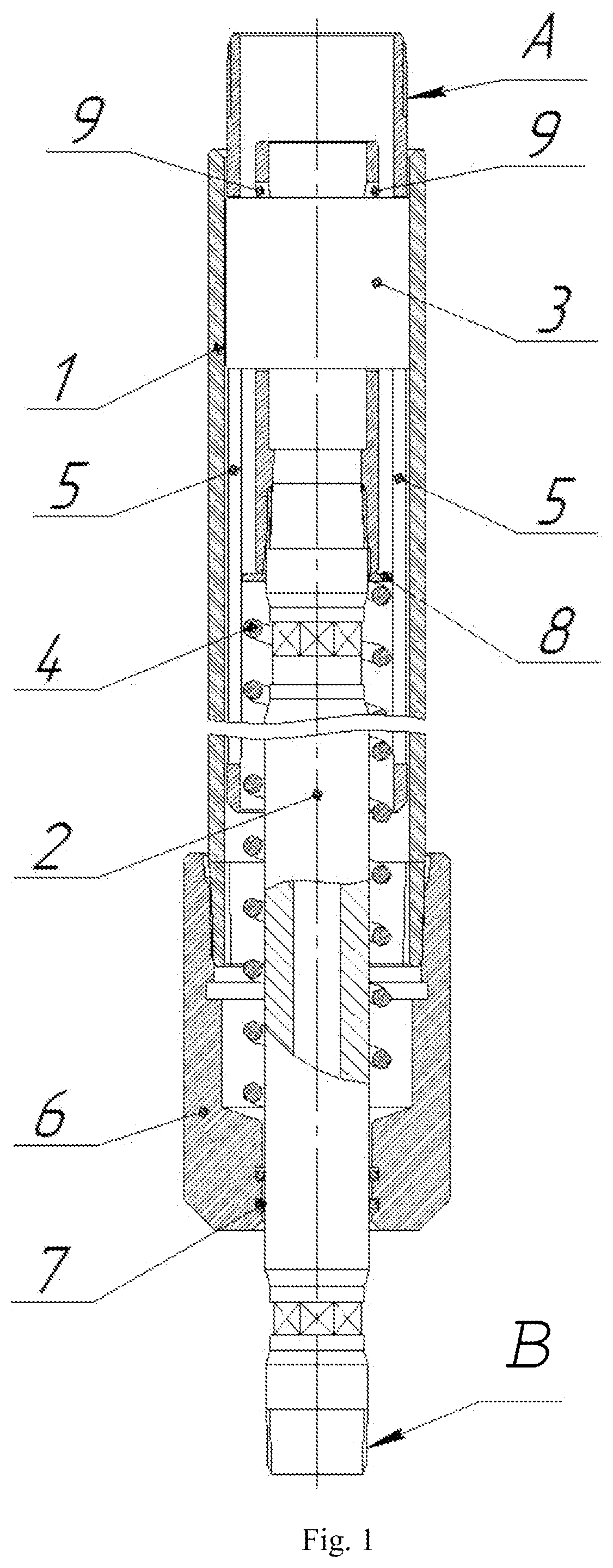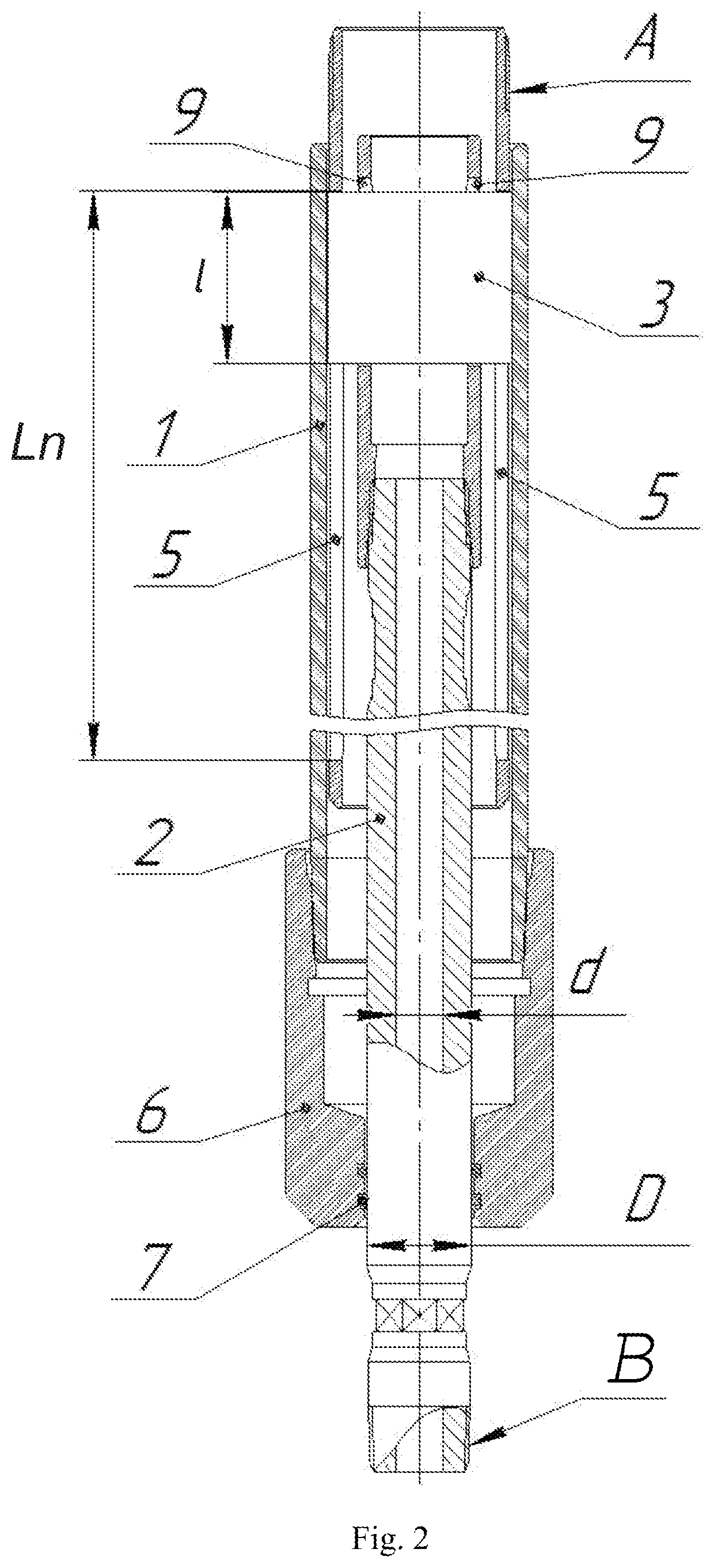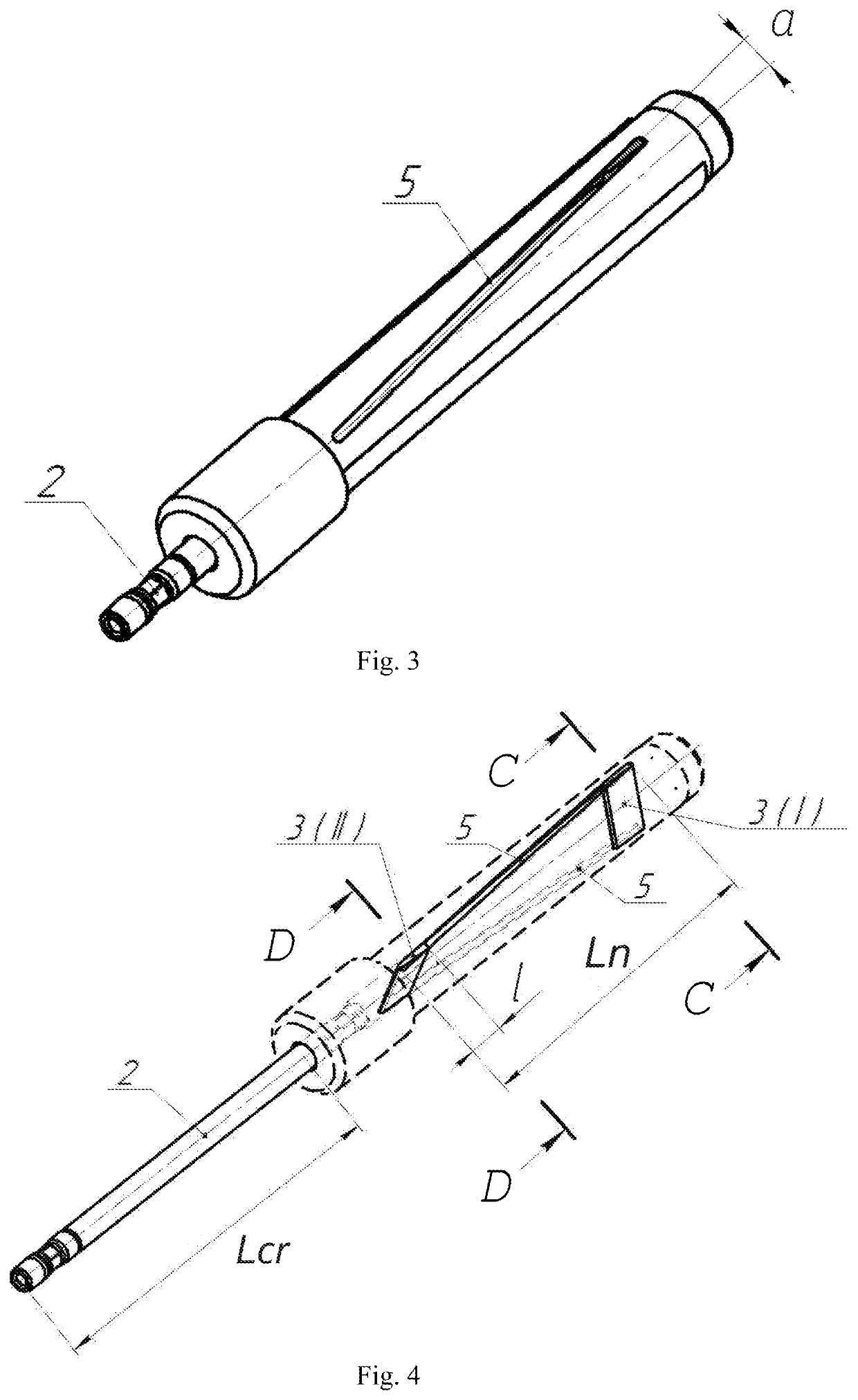Device for generating an axial load in a drill string assembly
- Summary
- Abstract
- Description
- Claims
- Application Information
AI Technical Summary
Benefits of technology
Problems solved by technology
Method used
Image
Examples
Embodiment Construction
[0067]The DA operating with drilling mud and consisting of a rock-crushing tool, such as a drill bit, a small mud motor (MM), a string of coiled and rigid drill tubing, is fitted with an axial load device without anchor, for instance, between the coiled and rigid tubing, the said device including a hollow cylinder body with a sealing bush, a spring-loaded flow-type piston rod with a key, which is distinct from the existing options due to two-way longitudinal key slots on a cylinder body, along the inner generator line of the cylinder body parallel to its axis, or as a helical involute spiral with a left or right rise; in the said slots a key with longitudinal and transverse gaps and profiled surface is positioned so that it can move along the body slots together with the flow-type piston rod, and the gaps are adapted for the profiled key to have at least two degrees of freedom in the body slots and in the flow-type piston rod slots for axial movements relative to the cylinder body; ...
PUM
 Login to View More
Login to View More Abstract
Description
Claims
Application Information
 Login to View More
Login to View More - R&D
- Intellectual Property
- Life Sciences
- Materials
- Tech Scout
- Unparalleled Data Quality
- Higher Quality Content
- 60% Fewer Hallucinations
Browse by: Latest US Patents, China's latest patents, Technical Efficacy Thesaurus, Application Domain, Technology Topic, Popular Technical Reports.
© 2025 PatSnap. All rights reserved.Legal|Privacy policy|Modern Slavery Act Transparency Statement|Sitemap|About US| Contact US: help@patsnap.com



